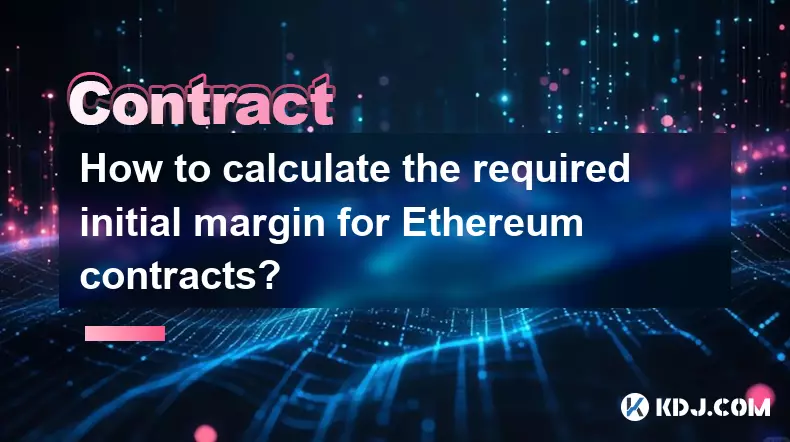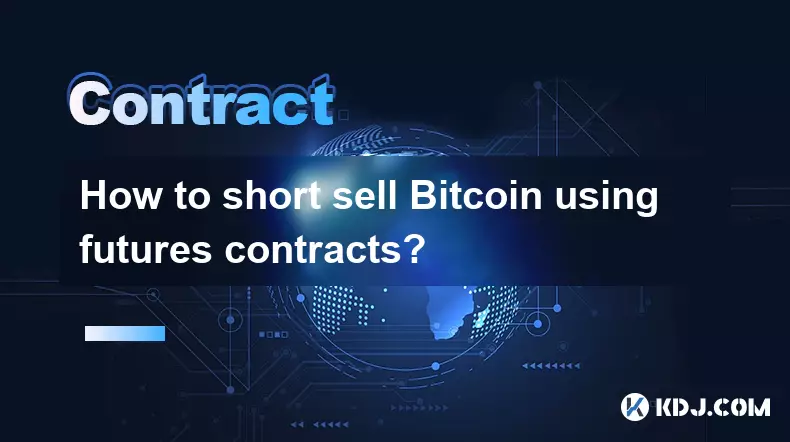-
 bitcoin
bitcoin $114320.977035 USD
-0.40% -
 ethereum
ethereum $4152.439985 USD
-1.75% -
 tether
tether $1.000111 USD
-0.04% -
 xrp
xrp $2.843037 USD
-1.63% -
 bnb
bnb $1013.349380 USD
-1.62% -
 solana
solana $208.362767 USD
-2.10% -
 usd-coin
usd-coin $0.999783 USD
0.00% -
 dogecoin
dogecoin $0.232559 USD
-1.00% -
 tron
tron $0.333491 USD
-1.09% -
 cardano
cardano $0.806310 USD
0.19% -
 hyperliquid
hyperliquid $45.023720 USD
-1.59% -
 ethena-usde
ethena-usde $1.000819 USD
-0.06% -
 chainlink
chainlink $21.241249 USD
-2.11% -
 avalanche
avalanche $30.035416 USD
-0.66% -
 stellar
stellar $0.364984 USD
-2.05%
How do I convert margin assets for Bitcoin futures?
You can convert margin assets in Bitcoin futures trading, but volatility, platform rules, and position health must be monitored to avoid liquidation risks.
Sep 28, 2025 at 07:36 pm

Understanding Margin Assets in Bitcoin Futures
1. Margin assets serve as collateral when trading Bitcoin futures on derivative exchanges. Traders deposit funds, typically in stablecoins or Bitcoin itself, to open leveraged positions. These assets are held in a margin account and fluctuate based on market movements and position performance.
2. Converting margin assets involves reallocating available balances within the futures trading interface. Most platforms allow users to switch between different supported assets like USDT, BUSD, BTC, or ETH as margin for open contracts. This process does not require withdrawing funds but adjusts what backs the position.
3. Each exchange has specific rules about eligible margin types depending on the futures contract. For instance, inverse futures use Bitcoin as margin, while linear futures often accept stablecoins. Understanding these distinctions ensures smooth conversion without triggering liquidation risks.
4. The conversion function is usually located under the “Positions” or “Margin” tab in the trading dashboard. Users can select an open position and choose to add or reduce margin using a different asset class if permitted by the platform’s framework.
5. It's critical to monitor the health of your position during conversion. Switching assets may alter the effective leverage due to differing valuations and volatility profiles. A sudden drop in the value of the newly assigned margin asset could accelerate liquidation if not managed proactively.
Steps to Convert Margin Assets on Major Platforms
1. Log into your futures trading account on platforms such as Binance, Bybit, or OKX. Navigate to the futures section and locate your active positions. Identify the contract where you wish to modify the margin source.
2. Click on the “Edit Margin” or similar option adjacent to the position. A pop-up window will display current margin holdings and available options for adjustment. Select “Add Margin” or “Transfer Out” depending on whether you're increasing or changing the backing asset.
3. Choose the desired asset from the dropdown menu—this might include USDT, BTC, or other accepted tokens. Enter the amount you want to allocate. The system recalculates your maintenance margin and estimated liquidation price based on this update.
4. Confirm the transaction through two-factor authentication. Once processed, the new asset appears in your margin balance, and all risk metrics reflect the change immediately. Some platforms charge internal transfer fees or apply rate conversions at market prices.
5. Verify that the position overview reflects the updated margin composition. Check that funding payments, profit calculations, and unrealized PnL align with expectations post-conversion. Misalignment may indicate incorrect settings or unsupported asset usage.
Risks and Considerations During Conversion
1. Volatility in the chosen margin asset can directly impact position stability. Using highly volatile cryptocurrencies like altcoins as margin increases the likelihood of forced liquidation during sharp downturns. Stablecoins mitigate this risk but offer no upside during rallies.
2. Cross-margin versus isolated margin modes affect how conversions influence overall portfolio exposure. In cross-margin mode, all available assets back the position collectively, whereas isolated margin restricts it to a single allocation. Switching assets in isolated mode requires precise sizing to avoid under-collateralization.
3. Exchange-specific limitations may prevent certain conversions during high-volatility events or maintenance periods. Some platforms temporarily freeze margin adjustments when markets experience extreme swings to preserve system integrity.
4. Tax implications vary by jurisdiction when transferring assets internally for margin purposes. While no sale occurs, regulatory bodies may interpret asset movement as a taxable event if deemed equivalent to disposal or revaluation.
5. Always review fee structures related to internal transfers. Although most major exchanges do not charge for moving funds between spot and futures wallets, some apply small spreads or conversion costs when switching between token types.
Frequently Asked Questions
Can I use multiple assets simultaneously as margin for one futures position?
On most platforms, a single futures position uses one type of margin asset at a time. However, in cross-margin mode, the system aggregates various assets into a unified collateral pool valued in USD terms. You cannot assign separate coins directly to the same contract simultaneously.
What happens if the value of my margin asset drops significantly after conversion?
The position's margin ratio decreases, increasing the chance of liquidation. If the equity falls below the maintenance threshold, the exchange automatically closes the position. Monitoring price action and maintaining buffer capital helps avoid abrupt exits.
Is it possible to convert margin assets while holding a leveraged short position?
Yes, traders can adjust margin assets regardless of long or short orientation. The ability depends on platform support and current position status. Ensure sufficient liquidity exists in the target asset wallet before initiating the transfer.
Do all futures contracts allow margin conversion during trading hours?
No, certain perpetual or quarterly contracts may restrict margin edits during settlement windows or extreme market conditions. Exchanges implement temporary locks to maintain order execution fairness and risk control across the platform.
Disclaimer:info@kdj.com
The information provided is not trading advice. kdj.com does not assume any responsibility for any investments made based on the information provided in this article. Cryptocurrencies are highly volatile and it is highly recommended that you invest with caution after thorough research!
If you believe that the content used on this website infringes your copyright, please contact us immediately (info@kdj.com) and we will delete it promptly.
- BlockDAG, DOGE, HYPE Sponsorship: Crypto Trends Shaping 2025
- 2025-10-01 00:25:13
- Deutsche Börse and Circle: A StableCoin Adoption Powerhouse in Europe
- 2025-10-01 00:25:13
- BlockDAG's Presale Buzz: Is It the Crypto to Watch in October 2025?
- 2025-10-01 00:30:13
- Bitcoin, Crypto, and IQ: When Genius Meets Digital Gold?
- 2025-10-01 00:30:13
- Stablecoins, American Innovation, and Wallet Tokens: The Next Frontier
- 2025-10-01 00:35:12
- NBU, Coins, and Crypto in Ukraine: A New Yorker's Take
- 2025-10-01 00:45:14
Related knowledge

What is the maintenance margin for Bitcoin contracts?
Oct 02,2025 at 01:36am
Decentralized Exchanges Gain Momentum in 20241. Decentralized exchanges (DEXs) have seen a significant rise in trading volume, surpassing centralized ...

How to calculate the required initial margin for Ethereum contracts?
Oct 01,2025 at 06:01am
Understanding Initial Margin in Ethereum Futures1. The initial margin for Ethereum futures contracts represents the minimum amount of capital a trader...

What is a perpetual swap for Bitcoin contracts?
Oct 01,2025 at 08:18am
Understanding Perpetual Swaps in Bitcoin Trading1. A perpetual swap is a type of derivative contract that allows traders to speculate on the price of ...

What is the best platform for trading SOL contracts?
Oct 01,2025 at 06:36am
Understanding the Role of Decentralized Exchanges in Modern Crypto Trading1. Decentralized exchanges (DEXs) have reshaped how traders interact with di...

How to short sell Bitcoin using futures contracts?
Oct 01,2025 at 02:54am
Understanding the Role of Decentralized Exchanges in Crypto Trading1. Decentralized exchanges (DEXs) have become a cornerstone of the cryptocurrency e...

Are PEPE contracts a good way to trade volatility?
Oct 01,2025 at 04:18am
Understanding PEPE Contracts in the Cryptocurrency Market1. PEPE contracts, derived from the broader meme coin movement, have gained attention due to ...

What is the maintenance margin for Bitcoin contracts?
Oct 02,2025 at 01:36am
Decentralized Exchanges Gain Momentum in 20241. Decentralized exchanges (DEXs) have seen a significant rise in trading volume, surpassing centralized ...

How to calculate the required initial margin for Ethereum contracts?
Oct 01,2025 at 06:01am
Understanding Initial Margin in Ethereum Futures1. The initial margin for Ethereum futures contracts represents the minimum amount of capital a trader...

What is a perpetual swap for Bitcoin contracts?
Oct 01,2025 at 08:18am
Understanding Perpetual Swaps in Bitcoin Trading1. A perpetual swap is a type of derivative contract that allows traders to speculate on the price of ...

What is the best platform for trading SOL contracts?
Oct 01,2025 at 06:36am
Understanding the Role of Decentralized Exchanges in Modern Crypto Trading1. Decentralized exchanges (DEXs) have reshaped how traders interact with di...

How to short sell Bitcoin using futures contracts?
Oct 01,2025 at 02:54am
Understanding the Role of Decentralized Exchanges in Crypto Trading1. Decentralized exchanges (DEXs) have become a cornerstone of the cryptocurrency e...

Are PEPE contracts a good way to trade volatility?
Oct 01,2025 at 04:18am
Understanding PEPE Contracts in the Cryptocurrency Market1. PEPE contracts, derived from the broader meme coin movement, have gained attention due to ...
See all articles










































































